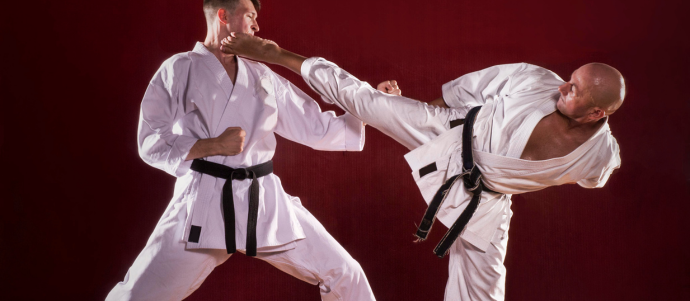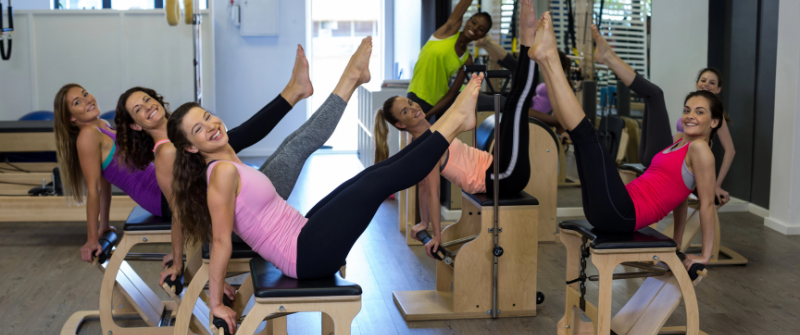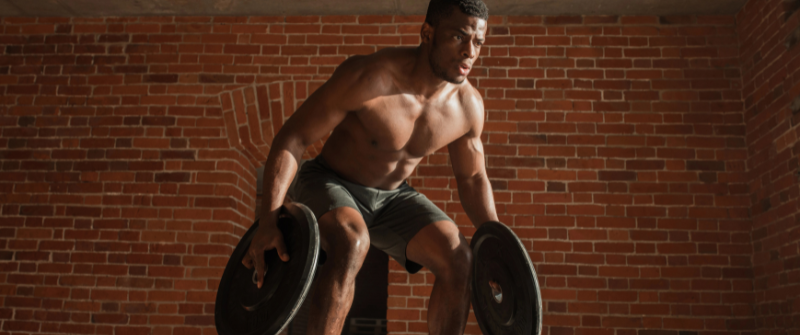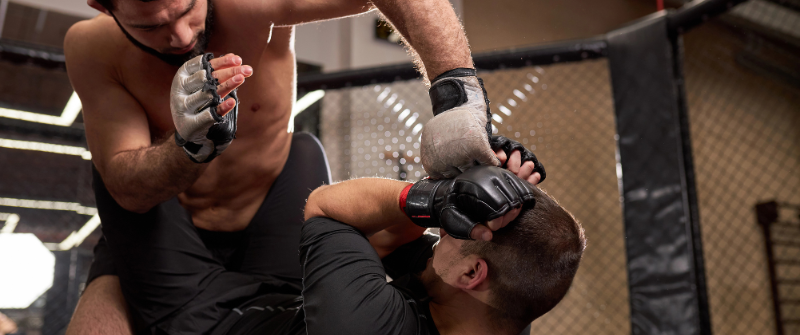
- by NEXO Team
- August 30, 2024
Insurance is a critical component of operating a martial arts studio. Protecting your business from financial ruin due to accidents or lawsuits is important. Beyond financial security, martial arts studio insurance also demonstrates a commitment to the safety and well-being of students, instructors, and visitors.
While accidents can happen in any setting, martial arts studios present unique risks. Common martial arts studio insurance claims often involve injuries, property damage, and liability issues. NEXO, the martial arts industry’s leading insurance authority, understands these risks and has resources on preventative measures you can implement to safeguard your studio and its community.
Also Read: Is A Martial Arts Studio A Profitable Business?
Common Martial Arts Studio Insurance Claims
Student Injuries
-
Sprains, Strains, and Fractures: These are the most common injuries sustained in martial arts training, sparring, or competitions. Improper techniques, overexertion, and accidental falls are frequent causes.
-
Concussions and Head Injuries: Head injuries, including concussions, can occur from strikes, falls, or collisions during training, particularly in high-contact martial arts styles.
Instructor Injuries
Fitness facilities, like many businesses, face rising costs associated with workers’ compensation martial arts studio insurance. These costs can be particularly burdensome due to the unique risks inherent in the fitness industry. To address this challenge, NEXO developed a pay-as-you-go solution that offers several key benefits:
-
Flexible Premiums: Pay only for the coverage you need, avoiding unnecessary costs.
-
Expert Guidance: Our team will assist with administrative tasks, audits, and regulatory compliance.
-
Negotiated Rates: By leveraging our collective purchasing power, we secure competitive rates for our clients.
Common Injury Types:
-
Overuse Injuries: Instructors who frequently demonstrate techniques can develop conditions such as joint pain, tendinitis, and muscle strains.
-
Training Accidents: Even instructors may experience injuries while training or supervising students. These can range from minor sprains to more serious fractures.
If negligence is involved in an instructor’s injury, the studio could face legal consequences. Adequate workers’ compensation coverage is essential to protect your business from liabilities.
Property Damage
-
Equipment Damage: Martial arts equipment, such as mats, punching bags, and training gear, is subject to wear and tear from regular use. Accidental damage can also occur during training or sparring. Repairing or replacing damaged equipment can incur significant costs, impacting the studio’s bottom line. Proper equipment maintenance, regular inspections, and providing clear guidelines for equipment use can help mitigate these risks.
-
Facility Damage: Martial arts studios can experience property damage due to various causes. Structural damage might result from accidents, such as students colliding with walls, or from issues related to building maintenance, like roof leaks or plumbing problems. Additionally, damage can be caused by students, visitors, or even external factors like natural disasters. Implementing preventative measures, such as regular facility inspections, prompt repairs, and clear facility usage policies, can help protect the studio’s physical assets.
Fitness facilities face unique property damage risks due to the nature of their operations. To address these challenges, NEXO offers comprehensive property martial arts studio insurance specifically designed for gyms and fitness studios. Our coverage includes:
-
Equipment Protection: Coverage for damage to martial arts equipment, including mats, training gear, and punching bags from wear and tear, accidents, or theft.
-
Facility Damage: Protection against structural damage caused by accidents, building maintenance issues, or external factors.
-
Business Interruption: Reimbursement for lost revenue if you’re forced to close due to a covered loss.
-
Glass Coverage: Protection for window glass, including those damaged by errant equipment.
By bundling property martial arts studio insurance with liability coverage, NEXO provides a seamless solution that safeguards your martial arts business from various risks, so you can focus on your operations.
Also Read: How To Choose The Best Property Insurance For Your Martial Arts Studio
Liability Claims
-
Negligence Claims: Martial arts studios can face negligence claims if students or staff believe there was a lack of proper supervision or instruction. These claims can allege improper training techniques, inadequate safety measures, or failure to prevent injuries. The associated legal costs, including attorney fees and potential settlements, can be substantial. To mitigate this risk, studios should maintain clear safety protocols, provide comprehensive instructor training, and document all safety procedures.
-
Visitor or Third-Party Injuries: Injuries to individuals who are not active participants in martial arts training, such as parents, spectators, or other visitors, can lead to liability claims. Slip-and-fall accidents, being struck by equipment, or other incidents on the studio premises can result in these claims. Implementing thorough safety inspections, maintaining clean and organized facilities, and providing clear signage about potential hazards can help prevent these accidents and the subsequent legal issues.
Also Read: Liability Insurance For Martial Arts
Prevention Strategies for Reducing Martial Arts Studio Insurance Claims
Implementing Comprehensive Safety Protocols
-
Regular Safety Inspections: Routine checks of equipment, training areas, and common spaces should be conducted to identify potential hazards such as worn mats, loose equipment, or slippery floors. These inspections should be documented and addressed promptly to prevent accidents.
-
Establishing Safety Guidelines: Clear and concise safety guidelines should be developed for both students and staff. These guidelines should cover various aspects of training, including warm-up routines, proper technique, the use of protective gear, and safe sparring practices. Regular review and reinforcement of these guidelines are essential to maintain a safety-conscious environment.
Training and Certification for Instructors
-
Proper Instructor Certification: Ensuring that all instructors possess relevant certifications demonstrates a commitment to quality instruction and safety. Continuous professional development through workshops, seminars, and advanced training keeps instructors updated on the latest safety practices and teaching methodologies.
-
First Aid and Emergency Training: Equipping instructors with first aid and CPR certifications is key to handling injuries effectively. Regular refresher courses ensure that staff members are prepared to respond calmly and competently in emergency situations.
Student Education and Engagement
-
Teaching Proper Techniques: A strong emphasis on correct form and technique from the beginning can significantly reduce the risk of injuries. Regular technique drills and demonstrations reinforce proper movement patterns, helping students develop muscle memory for safe execution.
-
Encouraging Open Communication: Creating a supportive and open environment where students feel comfortable reporting injuries or safety concerns is essential. Implementing a system for reporting incidents, such as an injury log, encourages students to come forward without fear of reprisal.
Facility and Equipment Maintenance
-
Regular Maintenance of Training Equipment: Implementing a routine maintenance schedule for mats, punching bags, focus mitts, and other equipment helps prevent wear and tear. Regularly inspecting equipment for damage and replacing worn-out items ensures the safety of all users.
-
Facility Upkeep: Maintaining a clean, organized, and well-lit training space contributes to a safer environment. Regular cleaning, proper ventilation, and addressing any maintenance issues promptly help prevent accidents and create a positive training atmosphere.
Waivers and Legal Protections
-
Using Comprehensive Liability Waivers: Requiring all participants to sign comprehensive liability waivers acknowledges the inherent risks associated with martial arts training. Consulting with legal counsel to ensure that waivers are legally sound and cover all necessary elements is important.
-
Clear Terms and Conditions: Clearly outlining the studio’s policies regarding safety, equipment use, behavior, and emergency procedures in a student handbook or contract is essential. Providing parents and students with a copy of these documents ensures transparency and understanding of expectations.
Conclusion
Proactive measures are the cornerstone of a secure and successful martial arts studio. By diligently implementing prevention strategies, studio owners can significantly reduce the likelihood of martial arts studio insurance claims. Regular safety inspections, comprehensive staff training, and a strong emphasis on student safety create a culture of prevention. This not only protects the studio’s financial well-being but also fosters a positive and trust-building environment for students and their families.
Effective risk management is an ongoing process that requires continuous attention and improvement. By prioritizing safety, investing in thorough training, and maintaining clear communication with students and parents, martial arts studios can build a strong foundation for long-term success. A safe and well-insured studio is not only a financial asset but also a testament to the studio’s commitment to the well-being of its community.
Martial arts studio insurance is a safety net, but prevention is the best policy. By understanding common martial arts studio insurance claims and implementing proactive measures, studio owners can protect their businesses and create a thriving martial arts environment.
To learn more about the specific risks your martial arts studio faces and how to effectively mitigate them, contact NEXO today.
Categories
Fill out a short form to contact us with your questions or to receive a customized quote.
Recent Posts
-
 Is Your Pilates Studio Prepared for a Medical Emergency?
January 5, 2026
Is Your Pilates Studio Prepared for a Medical Emergency?
January 5, 2026 -
 NEXO’s Affinity Program: How Fitness Suppliers and Associations Can Partner for Profit and Protection
December 5, 2025
NEXO’s Affinity Program: How Fitness Suppliers and Associations Can Partner for Profit and Protection
December 5, 2025 -
%20(1).png) How to Insure an MMA Gym Without Paying for Coverage You Don’t Need
December 5, 2025
How to Insure an MMA Gym Without Paying for Coverage You Don’t Need
December 5, 2025 -
 Mastering Liability for Jiu-Jitsu Tournaments and Martial Arts Events
December 5, 2025
Mastering Liability for Jiu-Jitsu Tournaments and Martial Arts Events
December 5, 2025 -
 From Zen to Zoning: What Every Yoga and Pilates Studio Owner Should Know Before Signing a Lease
December 5, 2025
From Zen to Zoning: What Every Yoga and Pilates Studio Owner Should Know Before Signing a Lease
December 5, 2025


